Free Form Steambending
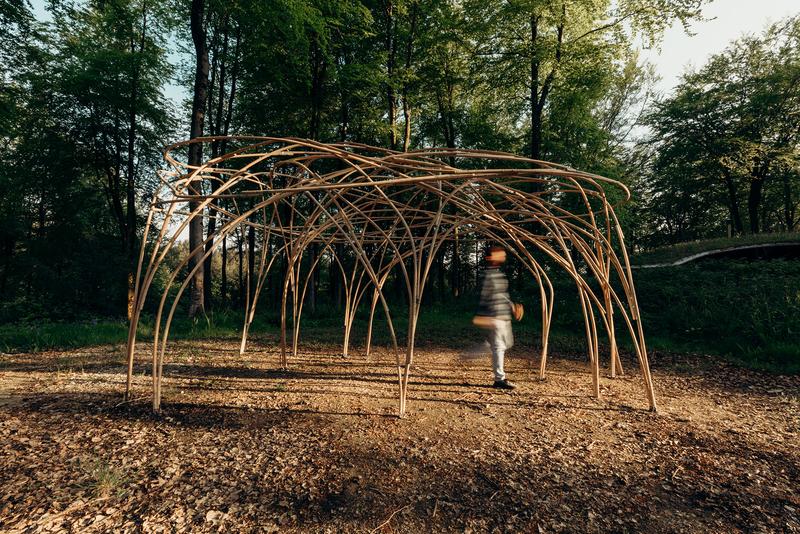
2020
Research project investigating the potential of freeform and formworkless steam bending – curving and twisting slender beech laths into complex predefined forms - undertaken by MArch D+M students.
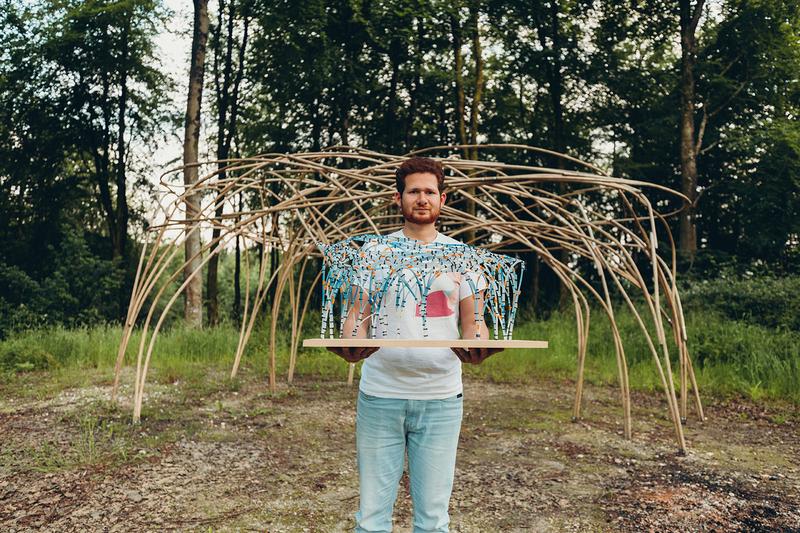
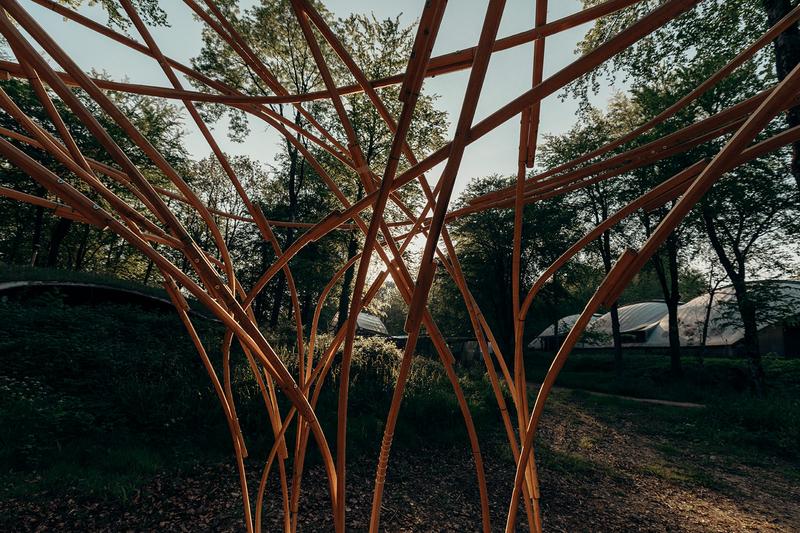
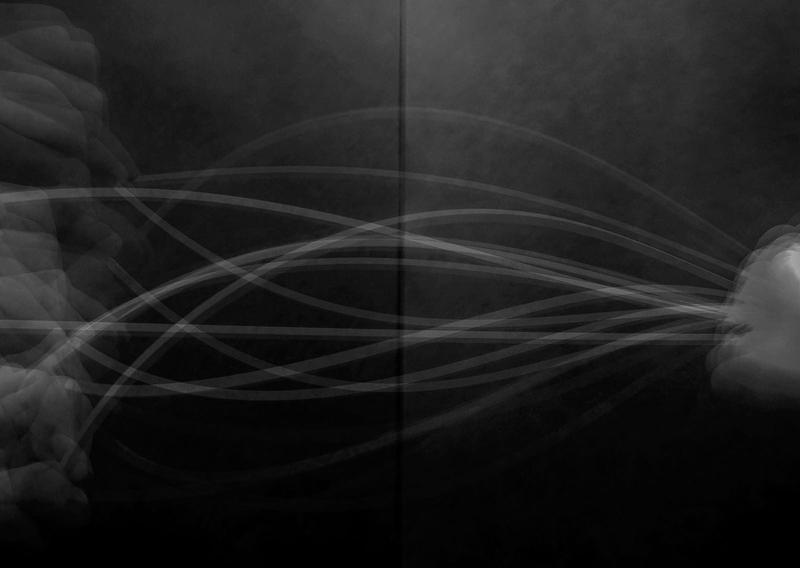
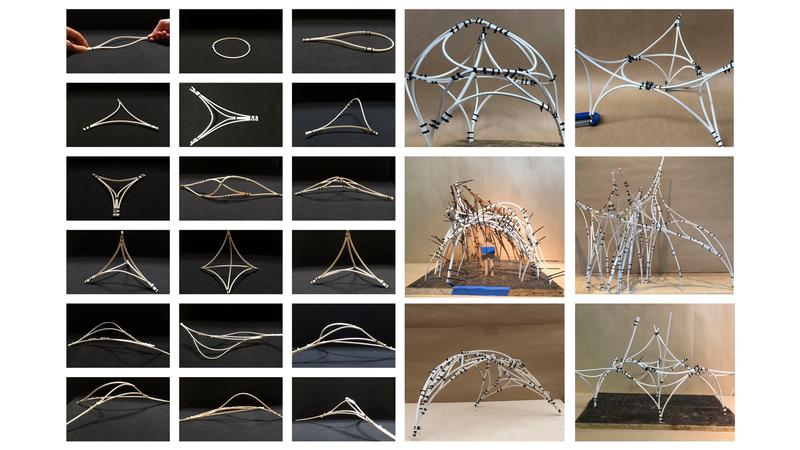
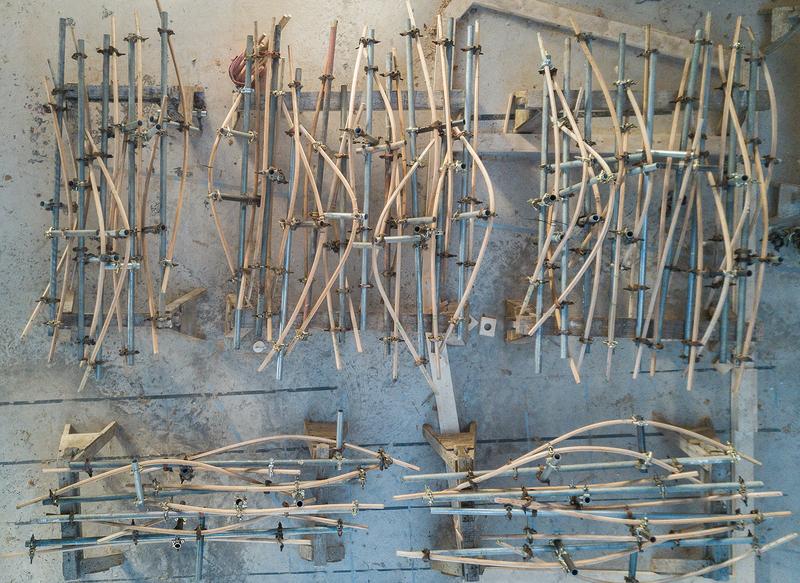
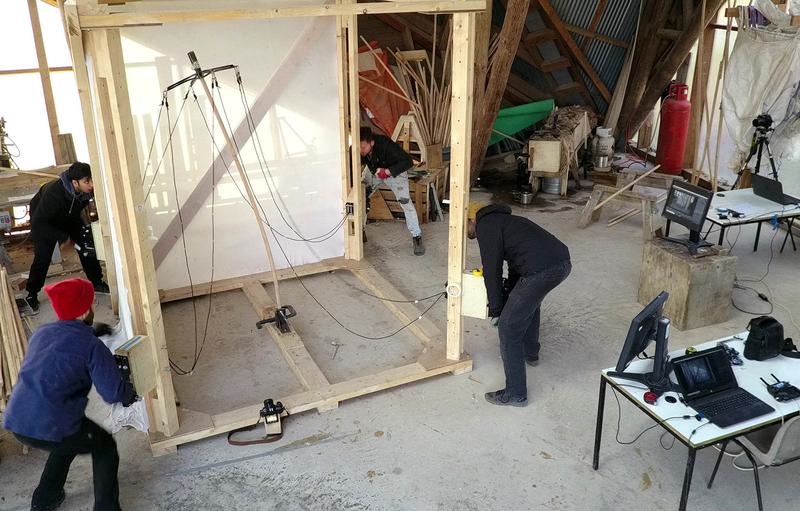
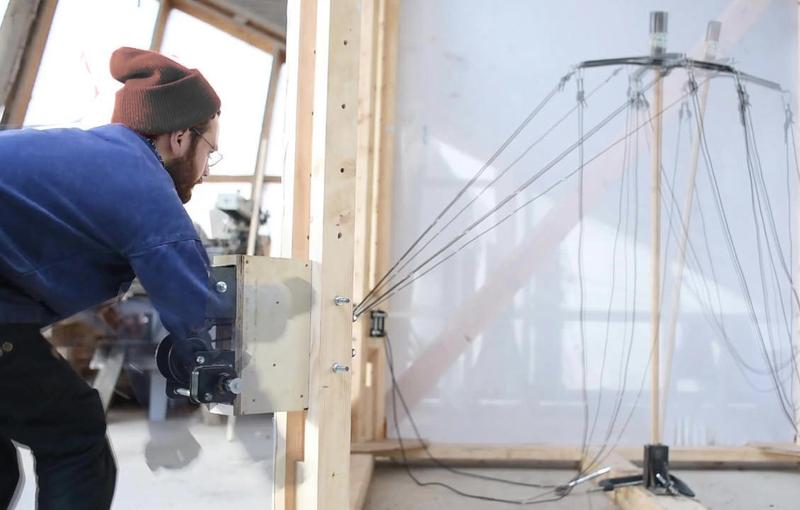
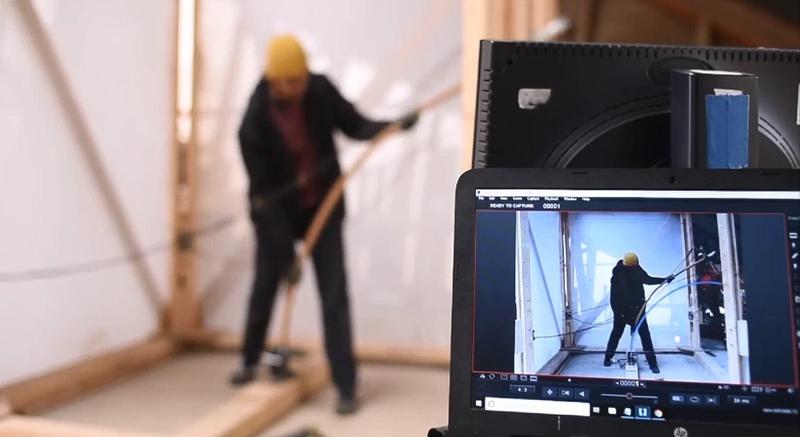
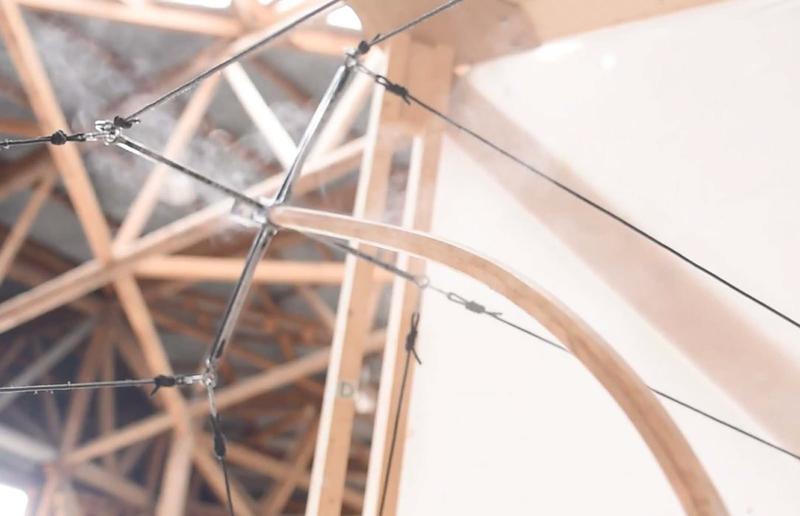
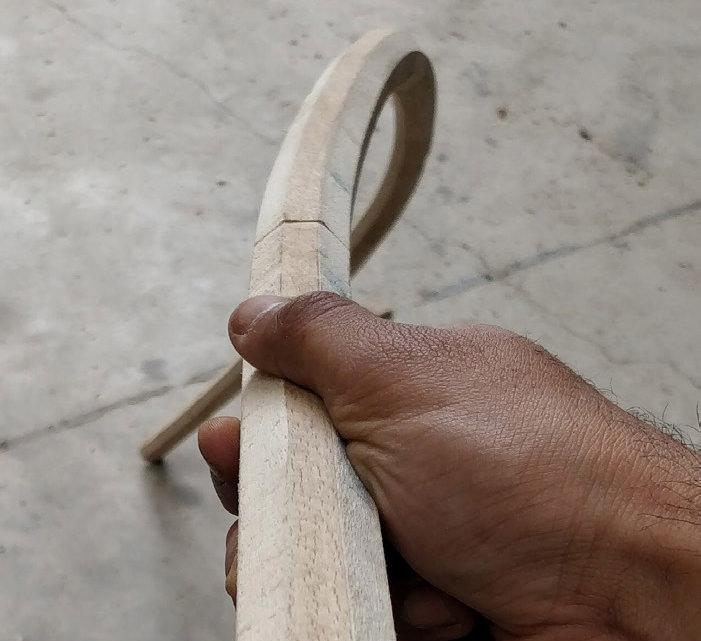
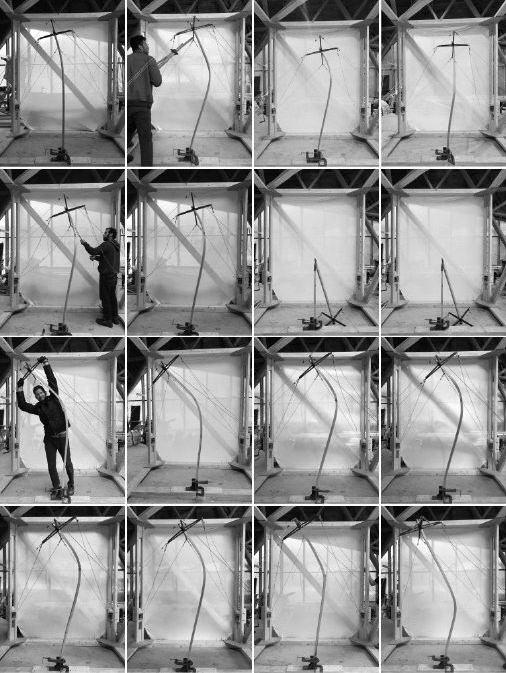
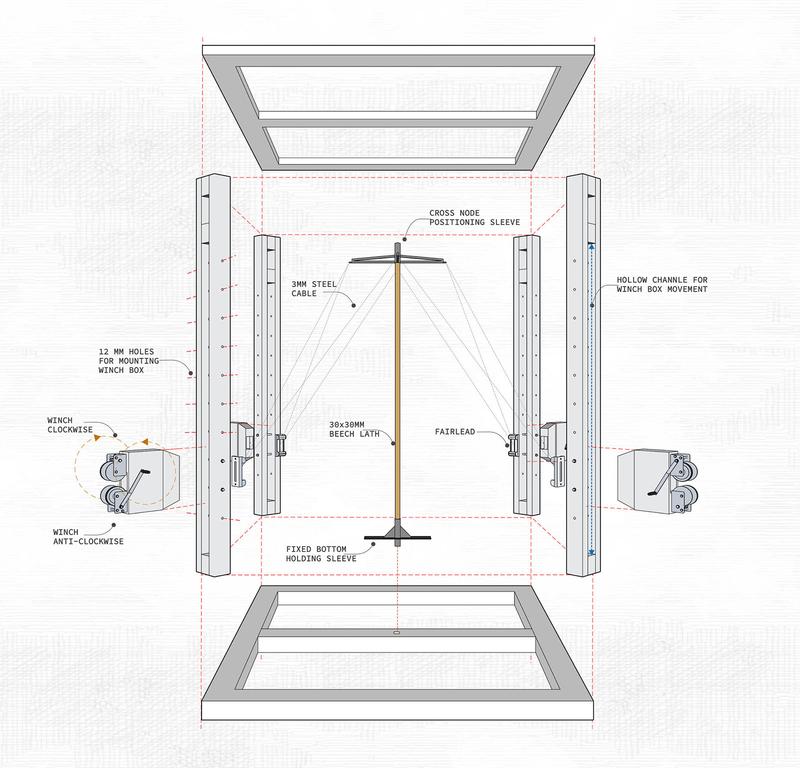
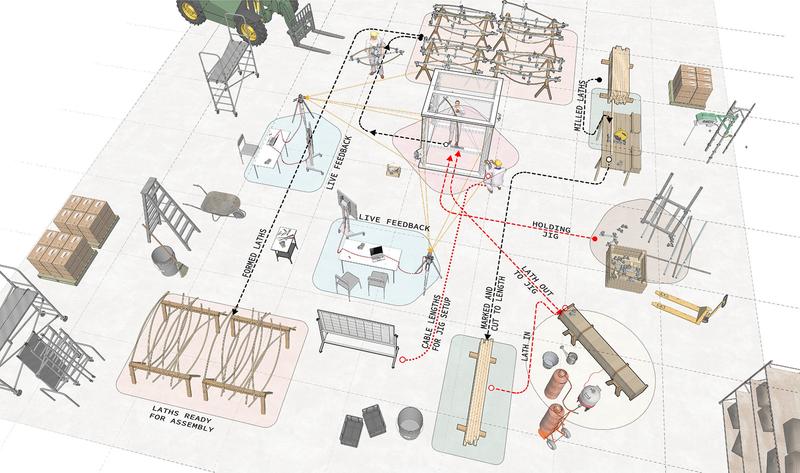
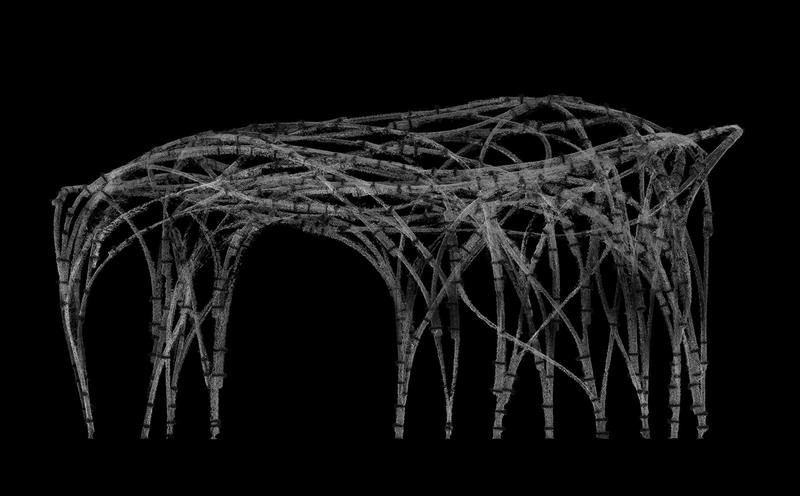
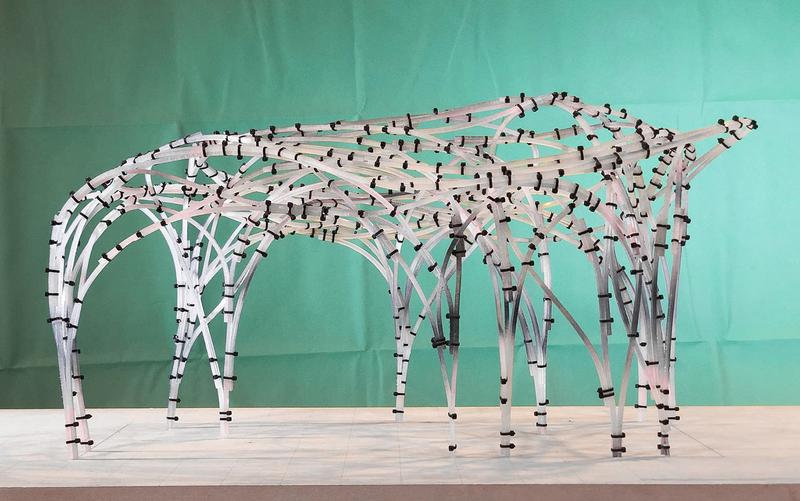
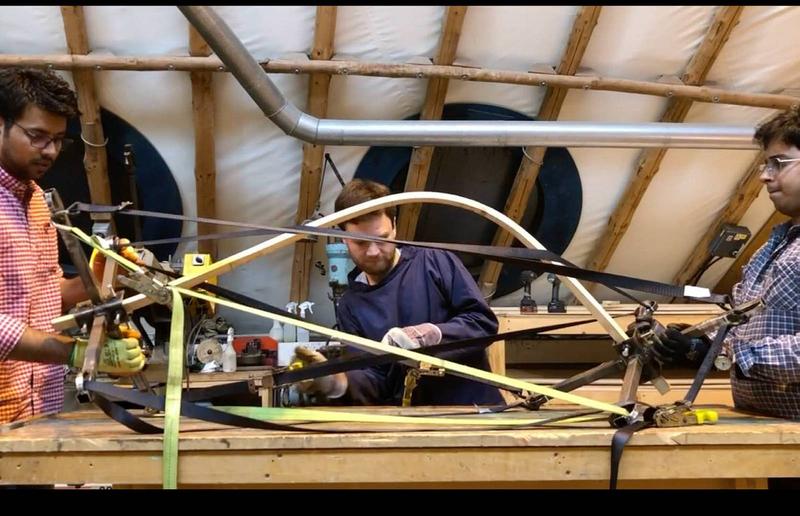
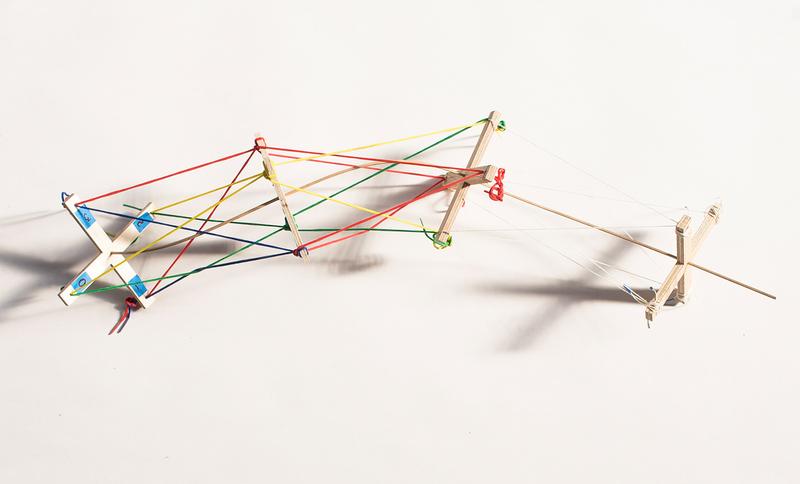
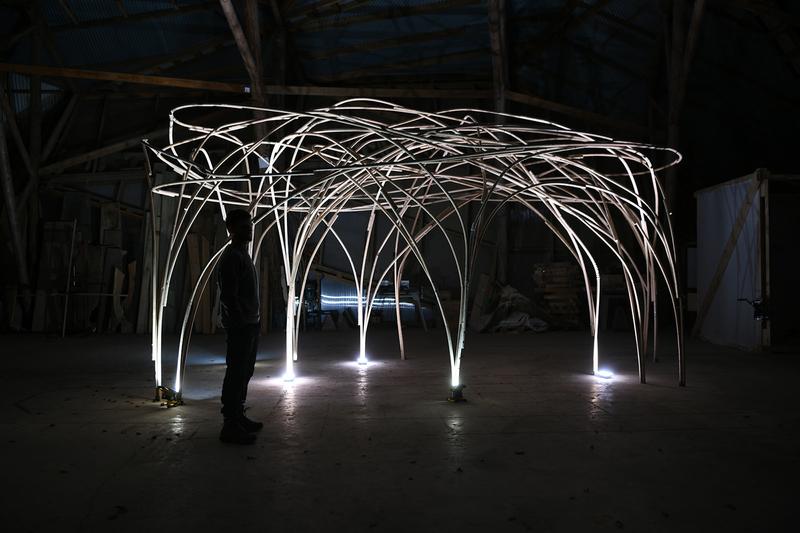
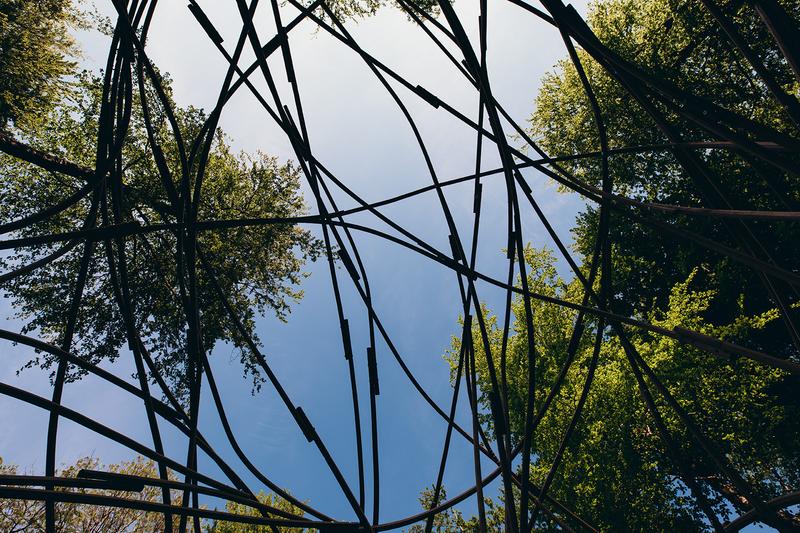
Through iterative cycles of material and digital experimentation our students refined a workflow in which a 3D scanned physical model could be digitally mapped, geometrically defined and converted to control data for a cable-controlled bending jig.
The jig evolved from early experiments into cable-deformed structures and the material optimisation of bending force and torsion application. Its final iteration consists of a cubic frame that anchors eight winch-controlled cables whose lengths define the position and orientation, in five degrees of freedom, of the lath top and thus the lath’s curved geometry.
A key aspect of the project’s workflow was the ability to 3D scan a 1:10 model and extract lath centreline geometries through scripting that enabled the pavilion’s elements to be fully geometrically defined. This approach opens the possibility of designing through physical modeling only, of forms that would be very difficult to sculpt digitally.
The pavilion shown deploys 140 unique laths created through this process from beech timber sourced directly from Hooke Park. Its design emphasises inhabitants’ experience of the flowing effect of continuous, tangentially connected elements.
Students
Hasan Danish
Luis Gil
Omar Eqbal
Raza Kazim
Collaborators
Charlie Corrywright (Workshop Manager)
Christopher Sadd (Forester)
Edward Coe (Technical Coordinator)
Jack Draper (Make Tutor)
Jonathan Blayney
Martin Self (Program Director)